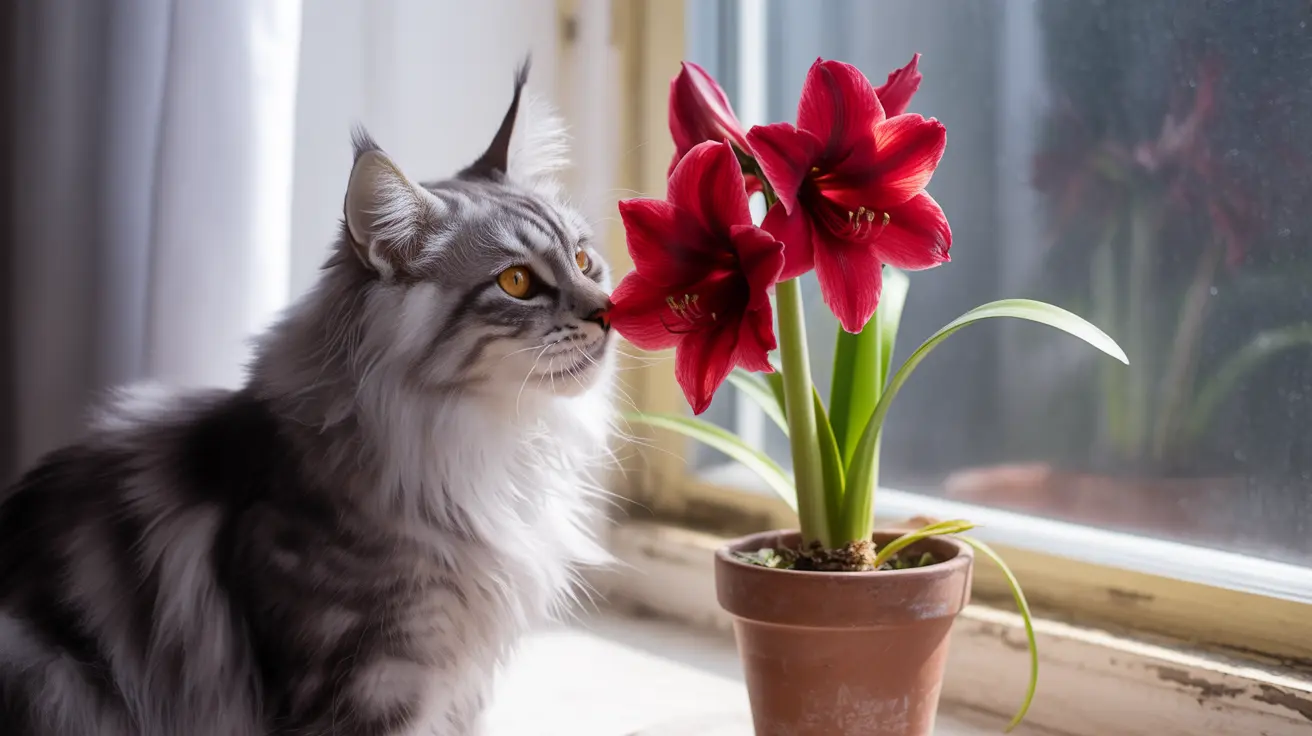The Hidden Dangers of Amaryllis Plants
While amaryllis plants bring vibrant beauty to our homes, especially during holiday seasons, they harbor a dangerous secret that every cat owner should know about. These popular flowering plants can pose a serious health risk to our feline companions, with potentially life-threatening consequences if ingested.
The entire amaryllis plant contains toxic compounds, with the bulb being particularly dangerous. The main culprit is lycorine, an alkaloid that can cause severe reactions in cats, along with other harmful substances like calcium oxalates that can lead to immediate and serious health complications.
Understanding the Toxic Components
Amaryllis plants (genus Hippeastrum) contain several toxic compounds that affect cats differently than other animals. The bulb contains the highest concentration of these dangerous substances, but every part of the plant - including leaves, flowers, and stems - can cause poisoning if consumed.
The primary toxic compound, lycorine, interferes with both the central and peripheral nervous systems in cats. This interference can lead to a cascade of serious symptoms that require immediate medical attention.
Recognizing the Signs of Amaryllis Poisoning
When a cat ingests any part of an amaryllis plant, symptoms typically appear within 1-2 hours. The severity of symptoms depends on how much of the plant was consumed and which parts were ingested.
- Severe gastrointestinal upset (vomiting and diarrhea)
- Excessive drooling
- Loss of appetite
- Lethargy and weakness
- Tremors or seizures in severe cases
- Decreased heart rate or irregular heartbeat
- Respiratory distress
Emergency Response and Treatment
If you suspect your cat has consumed any part of an amaryllis plant, immediate action is crucial. Contact your veterinarian or emergency animal hospital right away, even if symptoms haven't yet appeared. Time is of the essence in treating plant toxicity cases.
Never attempt to induce vomiting at home without veterinary guidance, as this could potentially cause more harm. Keep any plant material your cat may have chewed, as this can help with identification and treatment planning.
Prevention Strategies
The best way to protect your cat from amaryllis poisoning is through prevention. Remove all amaryllis plants from your home and yard, or ensure they're completely inaccessible to your cats. Remember that cats are excellent climbers and jumpers, so "out of reach" may not be truly safe.
Consider these alternative decorative options:
- Spider plants
- Boston ferns
- African violets
- Christmas cactus
- Bamboo palms
Frequently Asked Questions
Is amaryllis poisonous to cats, and which parts of the plant are most toxic?
Yes, amaryllis is poisonous to cats, with all parts of the plant being toxic. The bulb contains the highest concentration of toxic compounds, particularly lycorine, making it the most dangerous part if ingested.
What symptoms should I watch for if my cat eats amaryllis?
Watch for vomiting, diarrhea, excessive drooling, loss of appetite, lethargy, tremors, and difficulty breathing. Symptoms typically appear within 1-2 hours of ingestion and can range from mild to severe.
What immediate steps should I take if I suspect my cat has ingested amaryllis?
Contact your veterinarian or emergency animal hospital immediately. Collect any remaining plant material for identification, and monitor your cat closely. Don't attempt home remedies without professional guidance.
How do veterinarians treat amaryllis poisoning in cats, and what is the prognosis?
Treatment typically includes decontamination procedures, fluid therapy, and supportive care. The prognosis depends on the amount ingested and how quickly treatment begins, but most cats recover well with prompt medical attention.
What are safe alternative houseplants I can have if I own cats to avoid amaryllis toxicity?
Safe alternatives include spider plants, Boston ferns, African violets, Christmas cactus, and bamboo palms. Always verify plant safety through reliable sources like the ASPCA's toxic plants database before bringing new plants into your home.
Conclusion
While amaryllis plants are beautiful, the risk they pose to cats makes them unsuitable for homes with feline family members. By being aware of the dangers and choosing pet-safe alternatives, you can create a beautiful and safe environment for your cats to thrive in. Remember, when it comes to your cat's health, prevention is always better than treatment.






